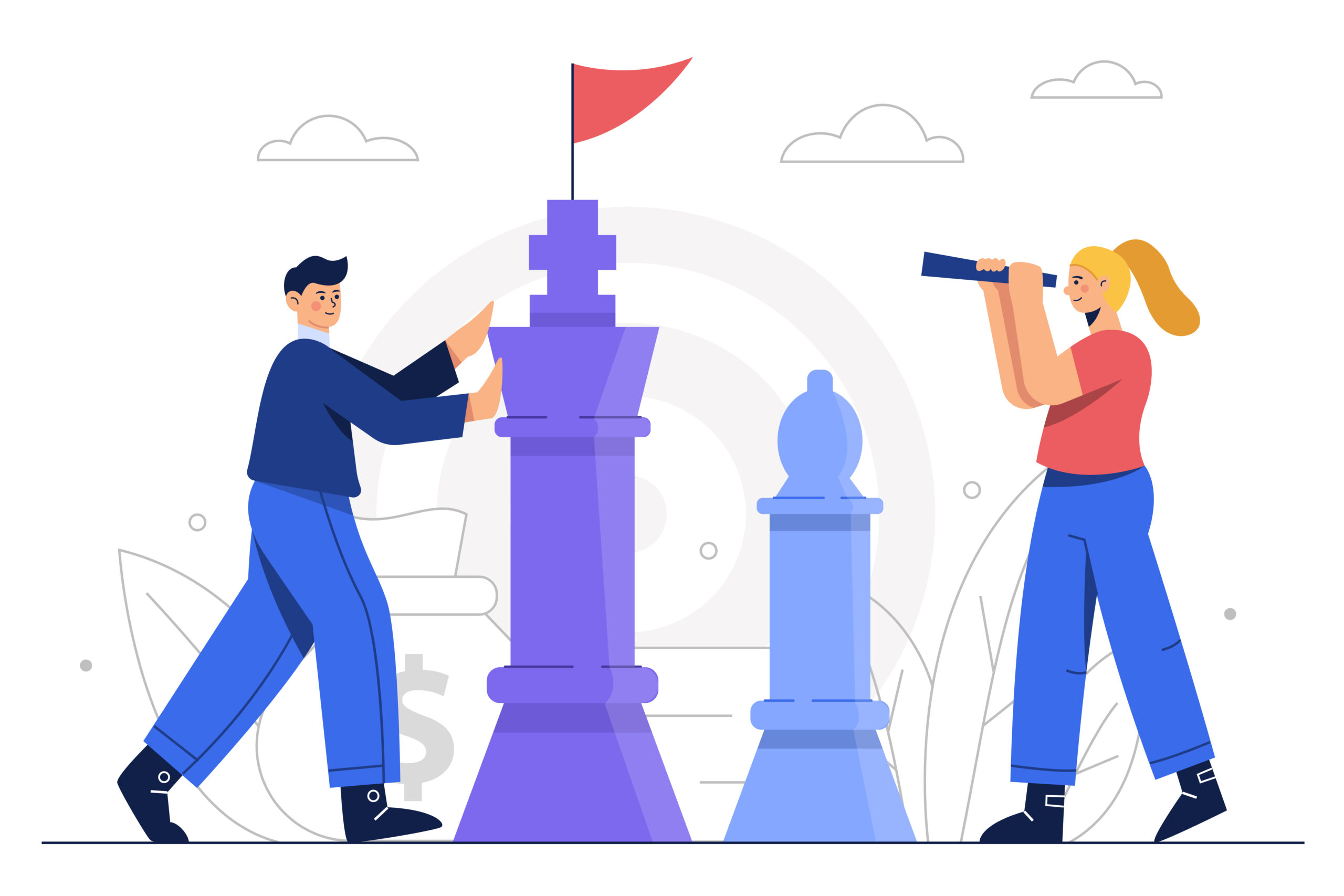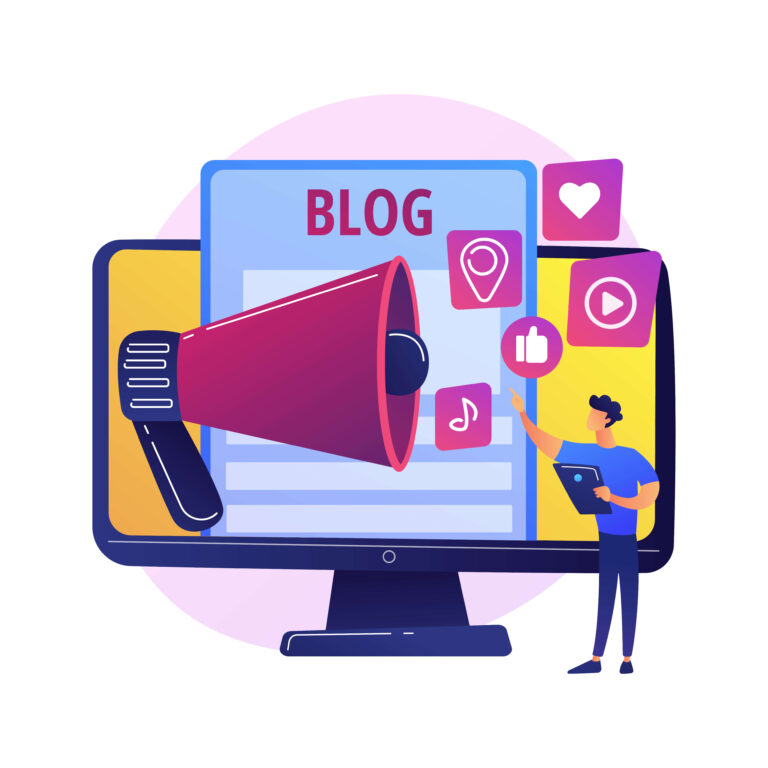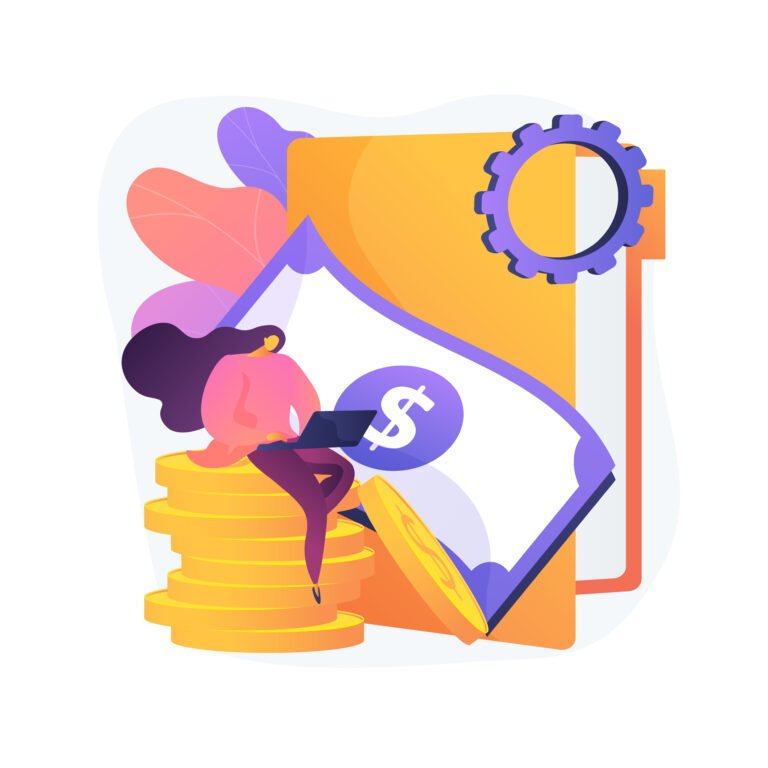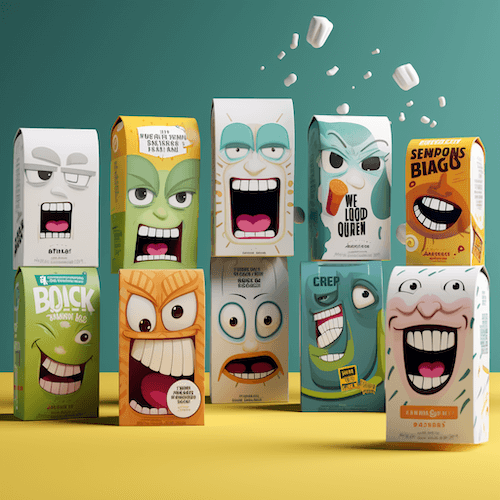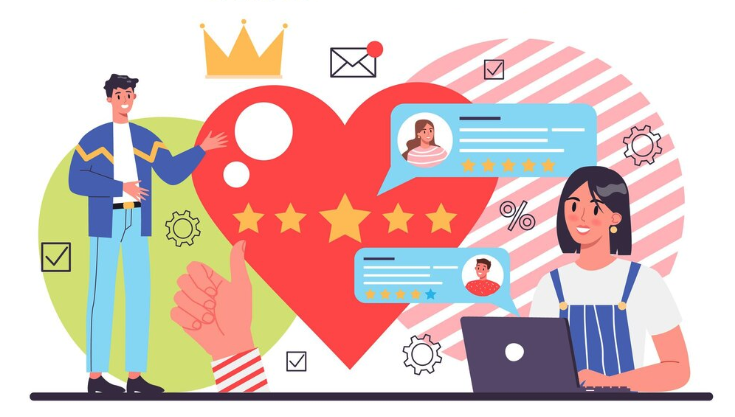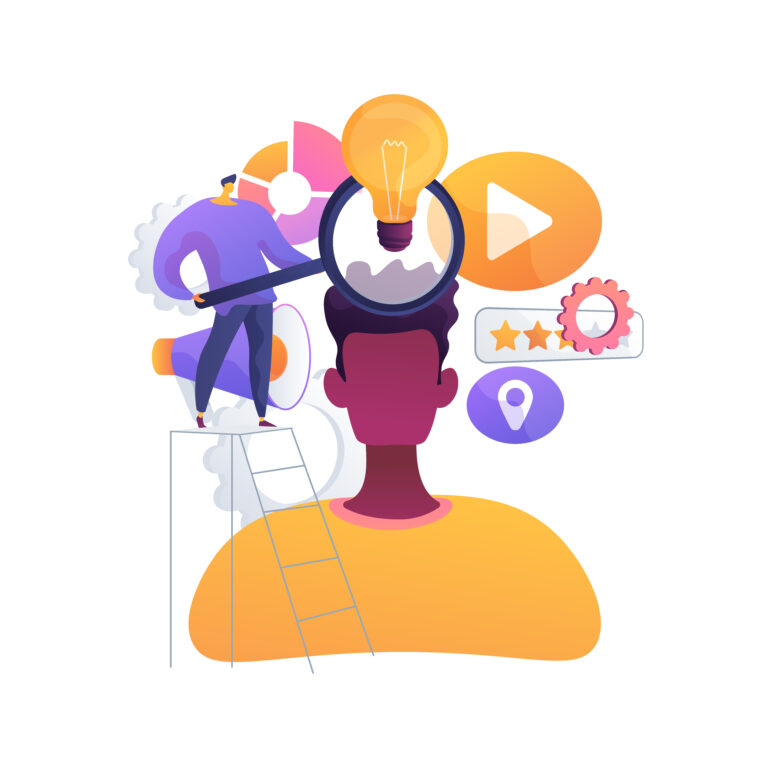Scroll, Like, Buy: How Brands Hack Your Brain (and It’s Totally Brilliant)
We’ve all been there – drawn in by slick marketing campaigns, enticing promotions and clever product packaging that seem irresistible in the moment. But have you ever wondered why certain brands, ads and offers manage to push our buttons so effectively? What hidden psychological forces are at play influencing what we buy?
As it turns out, our purchasing choices are not always as rational as we think. In fact, up to 95% of our daily decisions – including the purchases we make – happen automatically, directed by our unconscious mind. This reveals a tremendous opportunity for marketers to connect with customers on a deeper level.
As Steve Jobs once said: “A lot of times, people don’t know what they want until you show it to them.” Understanding the underlying emotional and mental drivers that shape consumer behavior allows you to show buyers what they want before they even realize it themselves.
In this article, we’ll explore key concepts in consumer psychology to decode the secret sauce behind compelling marketing. You’ll learn how leading brands ingeniously leverage cognitive biases, social influence and habit formation to persuade and retain customers. With over $200 billion spent annually on advertising worldwide, the stakes are high to tap into the complex psychology behind consumer decisions.
Let’s dive in to the unconscious forces that make us click “Buy”!
Why Our Purchases Aren’t Always Rational
Countless psychological studies reveal that we don’t make decisions in a perfectly logical, linear way. Our thinking is subject to hundreds of biases and mental shortcuts. Emotions often override reason. We’re heavily influenced by social norms, memories, morals, and the power of storytelling.
This explains why we might impulse buy yet another pair of shoes when we know we should save, or opt for the alluring brand name product over the generic alternative with identical ingredients. Our shopping carts quickly pile high as clever marketers tap into our emotions and automatic mental patterns.
What hidden factors influence consumers? Here are just a few of the psychological drivers that direct our dollars:
- Social proof – We look to what others are doing for social cues
- Authority – We defer to experts and celebrities
- Liking – We prefer to say yes to people we know and like
- Reciprocity – We feel obligated to return favors and gifts
These principles reveal why influencer marketing on Instagram and rewards programs like Sephora’s Beauty Insider work so well. Marketers leverage our natural human tendencies – the desire to fit in and reciprocate.
But influence also depends on tailoring tactics to different personality types. While all consumers are affected by cognitive biases, their motivations and values differ. Understanding consumer segmentation enables smarter messaging.
Getting Inside the Consumer’s Mind
Now that we’ve seen how irrational factors affect decisions, let’s look at the step-by-step process consumers go through when evaluating purchases. There are five stages that comprise the buyer journey:
1. Problem Recognition
This first stage occurs when consumers recognize an issue or need. Running out of a product like laundry detergent or seeing an innovative new item like the latest iPhone triggers the urge to purchase. Savvy marketers shape perceptions here, like highlighting problems people didn’t know they had.
2. Information Search
Next, consumers look for information to learn more about options. This might include reading reviews, asking friends for recommendations, or simply remembering past experiences with a brand. Maintaining visibility and cultivating a positive brand image keeps you top of mind during the search.
3. Evaluating Alternatives
With data gathered, consumers weigh the pros and cons of their choices. They may compare factors like pricing, features, and quality. Presenting the right information to guide this assessment is key. For example, highlighting sustainability helps position your product favorably if that attribute matters to your audience.
4. Making the Purchase
The final purchase decision is shaped by practical factors like available income, as well as emotional aspects like brand loyalty and desire. Urgency and scarcity triggers like limited-time sales push buyers off the fence. Make it easy to say yes!
5. Post-Purchase Experience
Satisfaction with the product, service quality, incentives and brand affinity after purchase all influence repurchasing. Managing customer experience through helpful information and community builds loyalty.
Now let’s explore some specific strategies to sway consumers at each stage.
Psychological Triggers that Make us Click “Buy”
If you want to fully leverage consumer psychology in your marketing, focus on incorporating these types of persuasive elements:
1. FOMO
FOMO, or “fear of missing out”, is a powerful motivator for purchases. Creating exclusivity and scarcity increases desire for your product or service. Consumers anxious about missing a good deal or limited edition product are more likely to act.
2. Social Proof
We are wired to look to others to guide our behavior, especially in uncertain situations. When consumers see the herd mentality in action, through tactics like showing positive reviews and ratings or revealing how many others have purchased, they become more comfortable following the crowd.
3. Reciprocity
The innate tendency to want to return favors can easily be leveraged with free trials, discounts and giveaways. Even a small gesture triggers the reciprocity principle, making consumers more likely to purchase from you.
4. Consistency
Consumers want to appear consistent with their past choices and stated beliefs. That’s why tactics like loyalty programs, subscriptions and branding that emphasizes commitment and relationships work so well to drive repeat business.
5. Personalization
We are more receptive to messages and offers that feel customized and relevant to us. Segmentation and psychographic profiling help you tailor communications in an authentic way.
6. Simplicity
Making the path to purchase as easy as possible eliminates friction. One-click ordering, auto-replenishment and pre-selected defaults all facilitate mindless choosing.
7. Emotions
Positive emotions like humor, warmth and nostalgia forge connections, while negative emotions like fear can also persuade. Vivid stories that evoke emotion make campaigns memorable.
8. Cognitive Ease
We favor options that are easy to think about over ones requiring effort to understand. Simple messaging, relatable analogies and clear visuals are more effective than complex presentations full of jargon.
These examples reveal the psychology behind why certain marketing campaigns just seem to work. However, consumers crave authenticity. Avoid overly manipulative tactics in favor of creating genuine value and connections.
Real World Examples of Consumer Psychology Done Right
Let’s look at a few examples of consumer psychology in action from some of the world’s most influential brands:
- Amazon – 1-Click ordering, personalized recommendations and Prime membership tap into convenience, customization and reciprocity.
- Uber – Ratings systems and nudges towards tipping leverage social proof and reciprocity to influence behavior.
- Netflix – The auto-play feature and recommended content based on viewing history make choosing the path of least resistance.
- Nike – Nike’s running club and apps build community and leverage comparison and goal setting to motivate users. Exclusive shoe drops also create FOMO urgency.
- Starbucks – Personalized rewards and status tiers tap into consistency, reciprocity and exclusivity. Familiar branding and convenient locations drive habitual purchases.
- Coca-Cola – Feel-good Christmas campaigns and sharing bottles with names on them strengthen emotional connections and relationships with the brand.
- McDonald’s – Appeals to nostalgia with retro packaging and McDonald’s-themed merchandise leverage powerful emotions and desire for memorabilia.
These examples demonstrate that marketing success requires understanding both the conscious practical needs, and unconscious emotional desires, that drive your audience.
The Future of Influence
Looking ahead, the integration of psychology, technology and data science will enable ever more sophisticated influence strategies. For example, AI can hyper-personalize ads and offers in real time based on your digital footprint. Voice assistants allow brands to infiltrate the intimacy of the home. Predictive analytics uncover links between behaviors and outcomes to optimize messaging.
While this level of micro-targeting provides value to consumers through relevance and convenience, ethical questions remain about how much brands should exploit vulnerabilities and unconscious tendencies. The role of marketing is evolving to be about finding win-wins and nurturing loyalty in an authentic way.
At the end of the day, consumers want to feel understood, connected and empowered. Build relationships that go beyond transactions by taking the time to unlock the psychology behind your audience. The human mind holds limitless potential for influence, but also requires respect. Use your powers for good!
7 Psychology Strategies That Startups Can Use to Influence Customer Purchase Decisions
In the dynamic world of startups, understanding and applying marketing psychology can be a game-changer. It’s more than a mere trick; it’s a strategic approach to connecting with your target audience. Let’s dive into seven key tactics, explore their relevance, and see how they can be applied to your startup’s marketing strategies – be it on your website, product pages, or landing pages.
- Commitment & Consistency Bias: This principle suggests that people prefer to act consistently with their past behaviors and expressions. Startups can leverage this by creating a lead nurture funnel. Begin with small requests and gradually increase them as potential customers move down the funnel. For instance, start by inviting them to read your content, then progress to an email signup, and eventually to a free trial or consultation. This gradual increase in commitment can significantly boost engagement and conversions.
- Anchoring Bias: The anchoring bias involves using initial information as a benchmark for future decisions. Startups can use this in pricing strategies by indicating markdowns or showing the amount saved. It helps set a perceived value and makes subsequent pricing more attractive. Displaying a higher original price followed by a discounted rate can create a perception of value and savings.
- Paradox of Choice: Too many options can overwhelm customers, leading to indecision. By limiting choices, startups can increase conversion rates. For example, if offering product varieties, consider focusing on a few key options rather than an extensive range. Simplifying navigation menus and having a single call-to-action (CTA) on landing pages also helps in reducing decision fatigue.
- Social Proof We often follow others’ behaviors in uncertain situations. Utilize testimonials and reviews across your website and ads. Featuring endorsements from well-known brands or displaying trust signals like awards or partnerships can bolster your credibility and influence buyer behavior.
- Reciprocity Effect Positive actions often result in similar responses. Provide exceptional customer service, valuable information, and free tools or trials. These gestures can inspire customers to reciprocate with positive reviews, additional purchases, or choosing your service over competitors.
- Mere Exposure Effect Familiarity breeds preference. Use display ads for brand awareness, even with low click-through rates. Regular exposure to your brand can build trust and preference. Retargeting ads can significantly increase CTR, just be mindful of ad frequency to avoid being perceived as intrusive.
- Pygmalion Effect High expectations can lead to higher performance. Set high standards within your team and convey to your customers that they can achieve their goals with your help. This creates a positive feedback loop, fostering customer loyalty and a unified team dedicated to excellence.
- Implementing these psychological strategies in your marketing can make a substantial impact on your startup’s success. Focus on building great products and earning your audience’s trust with responsible marketing. Remember, a combination of a strong product and savvy marketing is a recipe for long-term success.
15 Actionable Marketing Psychology Strategies for Startups:
1. Build a Frictionless Funnel: Map your customer journey, from discovery to purchase, ensuring each step is clear and easy. Example: Create a blog series leading to a free trial sign-up, highlighting user testimonials along the way.
2. Celebrate Progress Bars: Show customers how far they’ve come and how close they are to their goal. Example: Implement a progress bar on a free course enrollment page, motivating users to complete the modules.
3. Bite-Sized Content Wins: Break down complex topics into digestible chunks, using visuals and infographics. Example: Share bite-sized product tutorials on TikTok, showcasing features in short, engaging videos.
4. Mirror Their Aspirations: Understand your audience’s self-image and desires. Craft messages that resonate with their goals and insecurities. Example: If your startup builds productivity tools, highlight how they “empower busy professionals to achieve more.”
5. Shout About Savings: Don’t shy away from showcasing discounts and price reductions. Use bold numbers and highlight percentages saved. Example: Run a limited-time flash sale on social media, emphasizing the discounted price for immediate impact.
6. Simplify Choice Overload: Offer a curated selection of products or plans, avoiding overwhelming customers with too many options. Example: Design your website with a clean layout and limit product variations to the most popular choices.
7. One Click to Conversion: Focus on one clear call to action (CTA) per landing page. Remove distractions like navigation menus and social buttons. Example: Create a landing page for a specific offer with a single “Sign Up Now” button, minimizing decision fatigue.
8. Trust Through Testimonials: Showcase verified client testimonials prominently on your website and ads. Include photos and names for added authenticity. Example: Feature customer success stories on your homepage, demonstrating how your product solves real-world problems.
9. Borrow Credibility: Highlight endorsements from respected brands or influencers. Display badges and awards to build trust. Example: If your startup uses a secure payment platform, prominently display their logo and security certifications.
10. Quantify Your Impact: Use data and statistics to showcase your value proposition. Highlight user growth, engagement metrics, or case studies. Example: Share social media follower growth or customer retention rates to demonstrate your startup’s momentum.
11. Be Their Go-To Guru: Offer exceptional customer service, responding promptly and resolving issues efficiently. Build personal connections. Example: Implement a live chat feature on your website and train your team to actively engage with customers.
12. Knowledge is Power: Provide free valuable resources like blog posts, webinars, or eBooks to educate your audience and establish yourself as an expert. Example: Create a free “Startup Marketing Guide” downloadable PDF sharing your best practices and insights.
13. Trial Before You Buy: Offer free trials or demos of your product, allowing customers to experience its value firsthand. Example: Provide a limited-time free trial of your subscription service with easy signup and cancellation options.
14. Retarget the Lost Leads: Don’t give up on website visitors who didn’t convert immediately. Use retargeting ads to remind them of your offering. Example: Run retargeting ads featuring the exact product they viewed or highlighting special promotions.
15. One Voice, Many Channels: Ensure consistent messaging across all marketing channels, from social media to emails to your website. Maintain a unique brand personality. Example: Develop a brand style guide defining your voice, tone, and visual identity to keep your message cohesive.
Remember, these are just a starting point. Adapt and personalize these strategies to fit your specific audience and brand.
Application of consumer psychology in Marketing
- Segmentation and targeting: Marketing professionals may create targeted communications and target particular demographic segments by identifying and comprehending the traits and habits of various customer groups. These customer groups can be categorised by having a thorough understanding of consumer psychology, which entails consumer needs, preferences, buying-habits, etc.
- Branding and messaging: Creating effective branding and messaging requires an understanding of how customers perceive and absorb information. Consumer psychology insights can be used by marketers to develop messaging that connects with their target audience, highlights the special features of their goods or services, and foster brand loyalty.
- Pricing and promotions: Pricing and promotion methods might be influenced by consumer psychology studies. For instance, knowing how consumers value a particular product/service and price them accordingly, can help marketers create special offers that are more likely to result in conversions or set rates that are deemed to be fair and acceptable.
- Product design and packaging: A product’s packaging and design have a significant impact on consumer behaviour. Marketers should create products that are more likely to appeal to their target audience and set them apart from rivals by studying customer preferences for product design and packaging.
Conclusion: Applying the Psychology of Influence
Consumer psychology reveals the hidden depths shaping our purchasing decisions. From cognitive biases like reciprocity and consistency to emotional appeals that trigger FOMO, marketers have an arsenal of influence strategies. But persuasion must be handled responsibly, prioritizing authenticity, transparency and win-wins with customers.
The key is testing different psychological levers tailored to your specific audience segments. Carefully track results to determine what resonates and what falls flat. Over time, keep optimizing your messaging, campaigns, product offerings and experiences based on insights into the customer’s mindset.
At both an art and a science, marketing today requires pairing psychology savvy with ethical principles and genuine care for your customers. Do this successfully, and you hold the power to capture hearts, minds and long-term loyalty.
Now it’s your turn. How will you apply the psychology of influence to better attract, engage and delight your consumers?

